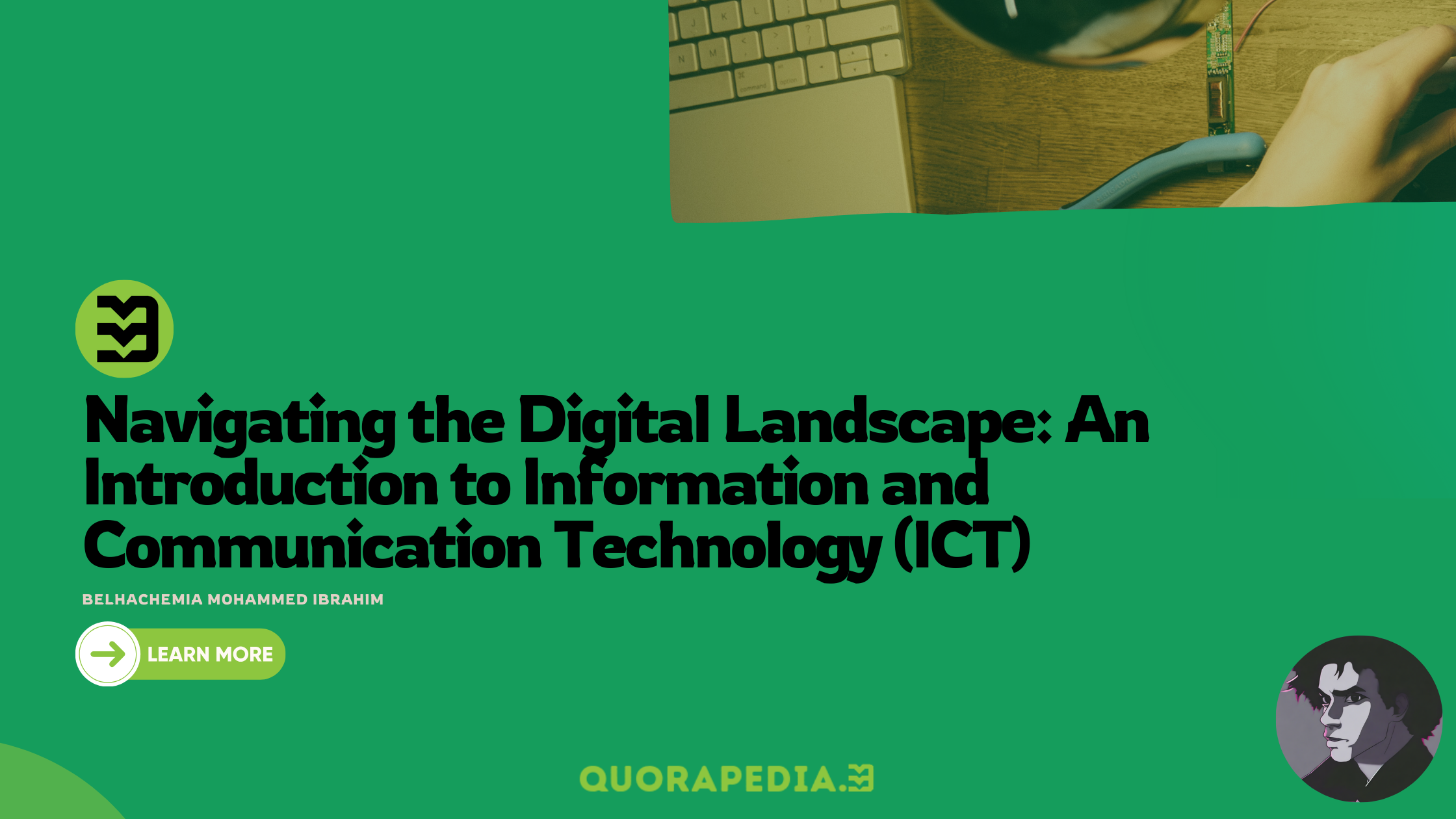- Digital Age: The era marked by the widespread adoption of digital technologies, characterized by the digitization of information and the proliferation of digital devices facilitating communication, computation, and storage.
- Information Overload: A condition resulting from the excessive exposure to information, wherein individuals experience difficulty in processing and managing the vast volume of available data, leading to decreased productivity and cognitive strain.
- Telemedicine: A branch of healthcare delivery utilizing Information and Communication Technology (ICT) to provide remote medical services, including diagnosis, consultation, and treatment, often facilitated through video conferencing and remote monitoring technologies.
- E-Learning: The utilization of digital technologies, particularly the internet, to deliver educational content and facilitate learning experiences outside the traditional classroom setting, allowing for flexible access to educational resources and courses.
- Digital Divide: The socio-economic gap between individuals or communities with access to digital technologies and those without, leading to disparities in opportunities for education, employment, and access to information and services.
- Network Infrastructure: The foundational framework of hardware and software components, including servers, routers, cables, and protocols, that enable the establishment and operation of communication networks, facilitating the transmission and exchange of data between connected devices.
- Big Data: A term referring to large volumes of structured and unstructured data generated from various sources, characterized by its high velocity, volume, and variety. Big Data often requires advanced analytics tools and techniques to extract valuable insights and inform decision-making processes.
- Cybersecurity: The practice of protecting computer systems, networks, and data from unauthorized access, cyberattacks, and data breaches, encompassing preventive measures, detection mechanisms, and response strategies to mitigate potential risks to information security.
- Cloud Computing: A model of computing that involves the delivery of computing resources, including servers, storage, databases, and software, over the internet on a pay-as-you-go basis. Cloud computing enables flexible, scalable, and on-demand access to shared resources, reducing the need for on-premises infrastructure and upfront capital investments.
- Internet of Things (IoT): The interconnected network of physical devices embedded with sensors, actuators, and software that enables them to collect, exchange, and analyze data, facilitating automation, remote monitoring, and control of devices and systems across various domains, including smart homes, healthcare, and industrial automation.
Question 1: What does ICT stand for?
a) Information and Computer Technology
b) Information and Communication Technology
c) Internet and Communication Technology
d) Interactive Communication Technology
Question 2: Which of the following best describes the historical evolution of ICT?
a) Stone Age > Iron Age > Middle Age > Electronic Age > Information Age
b) Industrial Age > Stone Age > Electronic Age > Middle Age > Information Age
c) Middle Age > Iron Age > Industrial Age > Information Age > Electronic Age
d) Stone Age > Industrial Age > Middle Age > Electronic Age > Information Age
Question 3: What is the primary role of computers in ICT?
a) Providing physical connections through cables
b) Transmitting data wirelessly through radio waves
c) Processing and storing data
d) Facilitating telecommunication
Question 4: How has ICT influenced education in the digital age?
a) By limiting access to educational resources
b) By discouraging interactive learning experiences
c) By revolutionizing education through online platforms
d) By decreasing efficiency and productivity
Question 5: Which of the following is NOT a significance of ICT in the digital age?
a) Economic Impact
b) Healthcare Advancements
c) Agricultural Innovations
d) Social and Political Impact
Question 6: What is the significance of communication networks in ICT?
a) They enhance mobility by providing physical connections
b) They facilitate the exchange of information across devices
c) They decrease connectivity and collaboration
d) They limit access to digital tools
Question 7: How has ICT impacted the healthcare sector?
a) By restricting access to medical information
b) By hindering remote healthcare services
c) By enabling telemedicine and remote monitoring
d) By decreasing efficiency in patient care
Question 8: What is the primary function of know-how in ICT?
a) Storing large volumes of data
b) Enhancing theoretical knowledge
c) Navigating and leveraging digital technologies
d) Restricting access to information
Question 9: What is the primary role of communication within ICT?
a) Storing and processing data
b) Transmitting data electronically
c) Providing physical connections
d) Enhancing security measures
Question 10: Which age is characterized by the advent of computers and the internet?
a) Stone Age
b) Middle Age
c) Electronic Age
d) Industrial Age
Activity: Fill in the Blank
Fill in the blank with the appropriate word from the list provided below:
"In the digital age, Information and Communication Technology (ICT) has transformed various aspects of our lives, influencing how we ____________, work, learn, and access information. From facilitating global ____________ through social media platforms to enabling remote ____________ services in the field of ____________, ICT has become an integral part of modern society. Its role in fostering ____________ and ____________ across diverse industries cannot be overstated. Moreover, ICT has catalyzed ____________ and ____________, leading to groundbreaking advancements in fields such as ____________ and ____________. Through the democratization of knowledge ____________ and the facilitation of ____________ learning experiences, ICT has revolutionized education. Furthermore, its impact on ____________ processes and ____________ in various sectors highlights its crucial role in driving efficiency and productivity. As we navigate the complexities of the digital age, the pervasive influence of ICT underscores its significance in shaping the future landscape of ____________ and ____________. Embracing ICT is not just a choice but a necessity in an interconnected world where ____________ and ____________ are key drivers of success."
List of Words:
- Communication
- Evolution
- Access
- Collaboration
- Healthcare
- Connectivity
- Innovation
- Multimedia
- Decision-making
- Social






